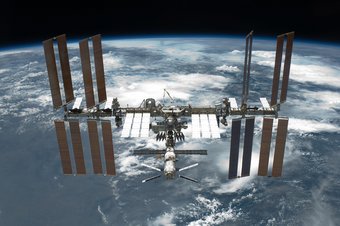Space for Education: Physics, Totally Weightless
As part of the "Horizons - Space for Education" project, the Haus der Astronomie in Heidelberg is developing school materials that can be used to integrate topics on physics from Alexander Gerst's ISS mission "Horizons" into physics or astronomy lessons.

About two weeks ago, ESA astronaut Alexander Gerst was the first German to be appointed Commander of the International Space Station ISS. As with his first mission four years ago, the work of "Astro-Alex" on the ISS fascinates children and young people. Tall and small earthlings are closer to the events on the ISS via social media than ever before.
This fascination can also be used for school lessons. As part of the "Horizons - Space for Education" project, the Haus der Astronomie in Heidelberg is developing materials that can be used to specifically integrate physical topics from the ISS mission "Horizons" of Alexander Gerst into physics or astronomy lessons. The project is being carried out in cooperation with the German Aerospace Center (DLR) and funded by the Joachim Herz Foundation.
On the one hand, it deals with fundamental questions of physics. Pupils from the intermediate and upper school can learn, for example, how to calculate the thrust of a rocket on its way to the ISS or how the space station supplies itself with solar energy. On the other hand, experiments carried out by Gerst during his stay on the ISS are also covered.
The materials can be downloaded free of charge at:
